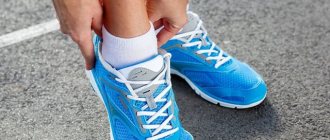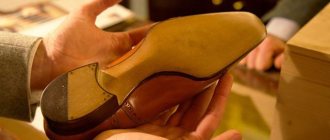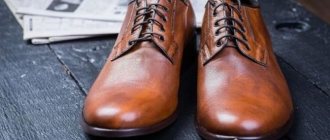Winter is a severe test for any boots or shoes, so during the cold season, increased demands are placed on shoe soles. In a quality product, it not only keeps your feet warm and dry, but also demonstrates stability on roads covered with a layer of snow or ice. Properly selected non-slip soles are the key to safety and comfort in winter. That is why, with the approach of cold weather, the most pressing questions are: what to look for when choosing boots in order to reduce the risk of injury during periods of icy conditions, and what ways are there to independently protect your shoes from slipping?
The sole slips in winter: how not to fall and what to do - the best folk tricks
If your shoes don't provide stability, there's an easy fix. There are proven techniques and simple means at hand. They will help you feel confident on slippery sidewalks and not depend on the work of the wipers.
No special skills are required - just desire and a little free time. Do the work slowly. Be careful not to damage your boots. Don't experiment with expensive things.
Glue, sand or millet
If you don’t know how to prevent your shoes from slipping, start with something simple. Use “Moment” glue or any other glue, except for stationery and PVA. It is also convenient to work with a glue gun.
What to do:
- Degrease the sole with alcohol (acetone).
- Apply glue in small portions. The design is arbitrary - dots, stripes or wavy lines.
- Let it dry.
- Add sand and press firmly onto a piece of cardboard.
- After 10-15 seconds. remove the cardboard.
- Wait until completely dry.
The method will protect shoes from slipping for 2-3 days. But there will be traces that are difficult to get rid of. For dress shoes, this option is eliminated. Instead of sand, you can take any grain, but the result will still not be durable. So be prepared to glue often.
Felt stickers
They can be made from old felt boots or house slippers. If your shoes slip, cut out several pieces 3-4 cm in size, coat them with shoe glue, and press down. The surface must be dry and free of grease.
Anti-slip pads can be tested after 1-2 hours. Felt is good for frosty weather, but not for slush. Validity period is a week. A significant disadvantage is the inconvenience when walking. Choose the thinnest felt you can find.
Slippery sole: how to fix it with polyurethane foam?
It is easier to use than sprinkling sand on glue or gluing felt. The foam holds tightly and does not spoil the appearance. It will last for several weeks. You will need a cylinder, a mounting gun, and protective gloves.
Procedure:
- Place the cylinder vertically. Remove the cap and screw on the adapter.
- Pull the trigger and release a small amount of foam.
- Once it hardens, remove the excess with a utility knife.
Press the hardened foam into a flat shape. Thickness – up to 0.5 cm. Trim protruding edges. Upon completion of work, tighten the control valve and clean the tool.
Sandpaper
The easiest way to protect yourself from falls in winter is to make your soles rough. To do this, before leaving the house, sand it or fix it with sandpaper in the place where the shoes slide.
There are two options for attaching to the sole:
- double-sided tape,
- superglue.
In the first case, cut two equal-sized pieces of sandpaper and double-sided tape. Glue them together and then attach them with the grain side facing out.
Please use caution. Grain sandpaper can easily scratch the floor covering.
In the second, use superglue “Moment”, Akfix 705, Cosmofen Ca-12. Press the surface and wait 20-60 seconds for the glue to harden.
Sandpaper comes in different grits. To prevent your shoes from slipping, take a larger sandpaper rather than a small one. The size of abrasive particles is 0.5 mm and above.
Duct tape, adhesive tape or adhesive tape
The one with the green stripe in the middle is better. It has a dense fabric base. Wash and dry the shoes, and then stick 2 strips on the heel and front. Place them in different directions.
Minus: if there is slush outside in winter, the patch will quickly get wet and fall off. Try to avoid puddles and keep a spare pack ready.
Socks over shoes
This is a method for extreme people, but it works, so I’ll add it to the list.
Choose oversized socks that will fit over your shoes. After one exit you will have to throw them away, but they will help you one hundred percent when walking on ice.
To avoid damage to your reputation, do not use the method in the city center or where friends might see you.
Homemade ice access from screws or self-tapping screws
The effectiveness is questionable - there are many negative reviews. The method is not suitable for soles with voids inside. In addition, the integrity of the product is damaged beyond repair.
If you want to try it, do the following:
- Prepare 10-20 self-tapping screws 16 mm long. They should not be too large so as not to pass through.
- Using a screwdriver or screwdriver, screw them into the sole, leaving 1-2 mm outside.
To increase grip, place the screws not perpendicularly, but at an angle of 45 degrees. Point them in different directions. This technique will ensure that there is no slipping in any direction of movement.
Nylon stockings
Many authors suggest setting fire to nylon tights or knee socks, and then placing the sole on the sole and using drops to create additional relief on it.
Before starting work, do not forget to take fire precautions and protect your respiratory system.
You will need nylon socks or tights:
- Turn the shoe over so the sole is facing up.
- Light a nylon sock over it so that it starts to melt and drip. Don't hold it in your hands. Use long tweezers or forceps.
- Place problem areas under the drops.
The tubercles are frozen and hold up well in any weather. But in practice, it is difficult to implement the recommendations. Nylon not only melts. It also burns well, smokes and emits an unpleasant odor.
I suggest doing it easier: cut off a small piece of tights, put it on the sole, and set it on fire with a match. The nylon will catch fire, melt and stick.
Be careful not to get burned. Cover the work surface with oilcloth.
Kitchen grater
No, it doesn’t need to be tied to the sole, as Zadornov once joked. It is enough to walk over it with fine teeth to give relief and increase grip on icy asphalt.
The method is not suitable for all shoes, but only for those that you don’t mind ruining. After such an impact it does not recover.
Soldering iron
Winter shoes should not only be warm, but also stable. The sole is responsible for adhesion to asphalt or paving slabs. For this purpose, it is provided with relief patterns - protectors. The depth and pattern depends on the purpose of the boots. In everyday life they are the simplest.
Using a soldering iron, you can create additional grooves on the tread that will increase grip. There is no soldering iron - any hot rod (nail) will do. Gently rub over problem areas to leave grooves.
Shoe laces
A simple, effective, but not very aesthetic method. It is used in emergency situations as a temporary measure when there is no time to look for an alternative.
Tie the laces around the front of the boots, leaving the knots at the bottom. When in contact with the surface, they will increase the friction force, preventing you from slipping.
The task of a competent seller
Each buyer, visiting a store, has certain requirements and wishes, but very often he himself cannot clearly and clearly formulate them and certainly cannot name the sole material that is suitable for him. The task of a competent seller is to identify needs and offer shoes that best meet the visitor’s expectations. If some properties of the product are clear to the buyer immediately or during fitting: style, comfort, color, size, then the material of the sole and its characteristics will not be clear to him even after several days of wear.
How to lubricate the sole to prevent it from slipping - homemade and store-bought remedies
A big plus is that they do not spoil the appearance of the shoes. They are easy to use, but their duration is limited. The effectiveness of folk techniques is low and depends on weather conditions. But store-bought sprays are quite effective, but their selection is small.
Raw potatoes
Cut off half and rub the sole before leaving the house. Starch forms a film and protects against slipping. The procedure must be repeated often. You'll get through two or three blocks, but that's not enough.
There is no point in taking the remaining half of the potatoes with you. The shoes will already be wet, and the starch will not stick to them.
The method does not work on ice - only on paving slabs, which also slip in cold weather.
Hair fixation spray
If you don’t know what to coat your soles with to prevent your shoes from slipping, keep a can of varnish ready. It is suitable for boots made of artificial materials. Before going outside, spray the surface generously and let dry for 5 minutes.
Many authors use this method, but its effectiveness is low. It only works in wet weather, and is not suitable for severe frosts. Sometimes the sliding from it increases. So I don't recommend it.
Shoe spray Gekko
This is the best way to prevent shoe soles from slipping in winter. The adhesion effect appears after 3-4 minutes.
The product is suitable for any shoes, does not harm them, and increases slip resistance. But don't apply it indoors!
No cleaning or drying is required before use. The only negative is that small particles may stick after treatment.
Anti-slip spray for shoes Slip Stop
It contains distilled water, pine rosin, and a nanoparticle formula with silicon dioxide and titanium dioxide. The spray forms a protective film on the surface, which ensures tight adhesion to ice.
Shake the bottle, spray at a distance of 20 cm from the surface, and then rub in with a cotton pad. The composition additionally protects shoes from moisture, dirt and chemicals.
Tread
In addition to the high-quality rubber composition, manufacturers pay great attention to the tread. Let's figure out what types there are, what their advantages and disadvantages are.
- Ice Grip (manufactured in Germany). In the manufacture of this model, a soft rubber compound is used. At the vulcanization stage, small ceramic particles are added to it. They create an abrasive that clings well to ice. Soft rubber is used only in the form of small lugs. The more there are, the less the shoes slide on the ice. This tread is well suited for ice that has formed on a hard crust of trampled snow.
- Acrtic Grip (manufacturer Italy). The manufacturing technology is identical to the previous one. But the degree of safety is higher - it holds even on the slipperiest wet ice.
- Tread with spikes. Metal elements are built into the sole directly during shoe production. This model is considered the most ideal for icy conditions. Sharp studs provide traction on the most slippery surfaces. For example, there are sneakers for runners with spikes - they can be used for running on paths covered with solid ice.
Slippery soles on winter shoes: what to do? Use professional products!
They are more effective than homemade tricks. They solve the problem radically, making boots safe and suitable for any conditions. This is probably the best thing you can do to keep your shoes from slipping in winter.
Anti-slip stickers
They are made from durable, wear-resistant material - polyurethane or vulcanized rubber. You can find them in large shoe stores. The stickers vary in size and are designed for stiletto or high heel shoes. They last up to a month, provide good protection against slipping on ice and are completely invisible.
Overlay protectors are easy to use: simply peel off the wearer and press onto a clean, dry sole.
Minus: the stickers are installed on the front, and the heel is left unprotected from slipping.
Ice access for shoes
The first thing to do if your winter shoes have slippery soles is to purchase ice shoes. They come in chain type, with a metal spring, and rubber with metal spike inserts. They can be worn around the city and on a hike. This is the most reliable and aesthetic way to make shoes non-slip.
The devices look stylish, are unnoticeable, and protect well from falling at any temperature. Anti-slip pads are selected according to size.
The most popular models:
- IC08-1. Designed for winter walks, made of elastic rubber. They serve for a long time and are attached to the toe and heel of shoes.
- IC08-3. Ensure safe movement on icy sidewalks. Almost invisible on shoes.
- IC07. Lightweight, reliable overlay crampon soles. Made of stainless steel, equipped with 8 teeth.
All of them are produced in Russia. With them, you can safely move on slippery sidewalks and icy paths in any weather, regardless of the weather. There is one minus - ice drifts are not suitable for shoes with heels.
Anti-slip gel pads
They are designed for sandals and protect the foot from slipping inside. I suggest using them differently: gluing them on the outside to prevent slipping in icy conditions. Use "Moment" or shoe glue "Second".
Outsole material
Not every raw material is suitable for the production of winter shoes: if frost resistance is insufficient, the base “dumbs”, becomes hard, and slippage increases. The sole should be sufficiently soft, elastic, and moderately wide - insufficient thickness leads to rapid freezing. In the manufacture of the sole part, the following materials are mainly used:
- TRP, TEP (thermoplastic elastomer), the main advantage of which is frost resistance. The material can withstand low temperatures - up to 45 ° C. The most non-slip soles are made from this raw material.
- PU (polyurethane) is good for making demi-season shoes, but not winter shoes. At sub-zero temperatures it begins to slip a lot, and at a frost of 20 degrees it can burst.
- TPU (thermopolyurethane) has good anti-slip performance. The downside is that it does not retain heat well, and therefore it is used only together with polyurethane, making a two-layer sole.
- PVC (polyvinyl chloride) is unsuitable for winter shoes: the base of it slips a lot. Frost resistance is zero, so in low temperatures the PVC sole will burst at the slightest load.
- EVA (ethylene vinyl acetate) is a wonderful lightweight material used to make one-piece boots or clogs. It retains heat well and is waterproof, but in frosty weather it slips a lot, so it is only suitable for summer and demi-season shoes.
- Rubber is an old and proven material: high wear resistance, elasticity, and flexibility have been proven over centuries of its use. The high-quality rubber sole is practical, frost-resistant and non-slip. The only drawback is that rubber shoes are heavy and your feet will get tired quickly.
As a result, the best materials for the soles of winter shoes are rubber (with a sufficient degree of softness and elasticity) and TPR. For many users, the latter is preferable, as it is lighter in weight.
Shoes with thermoplastic elastomer soles must be dried carefully: place them away from heating devices, as it melts and loses its properties.
PVC soles are not suitable for winter
EVA
TPU
P.U.
Rubber
TEP
What to do to prevent shoes from slipping?
There are many ways, but it is better to prevent the problem. This is the only way you are guaranteed to protect yourself from falling.
For winter, choose shoes with textured rather than smooth soles. Grip depends on the material. Polyurethane begins to slide at temperatures below zero, rubber at minus 10-12 oC, and thermoplastic elastomer can withstand up to 50 degrees below zero.
The best anti-slip properties are:
- thermopolyurethane (TPU),
- thermoplastic elastomer (TEP),
- thermoplastic rubber (TPR),
- multi-layer combinations.
The slipperiest polyvinyl chloride (PVC), tunit (leather-like rubber), polyurethane foam (PPU), ethylene vinyl acetate (EVA).
Rubber boots Pskov-Polymer
6th place Price: 990 RUR Limit temperature: -5
Rubber boots are one of the favorite types of shoes for children because they can walk through puddles. And certainly the best type of shoes for walking through swampy forests to pick berries and mushrooms. The presented boots are produced by the Russian plant Pskov-Polymer and honestly earn their money in spring, summer and autumn. But with frost, they freeze instantly, even despite the insulation installed. The surface area of the boot and the heat transfer of the rubber are such that within half an hour the temperature inside reached 0 degrees. And in the cold they become very tanned.
Tervolin's boots
4th place Price: 4500 RUR Limit temperature: -20
Normal winter city boots: leather on top and fur on the inside. In principle, for the urban winter of central Russia, these shoes will be enough, but in Siberia, with thin soles, your feet will freeze out quite quickly. Actually, the test demonstrated approximately this: the boots did not maintain a positive temperature inside even for an hour.











